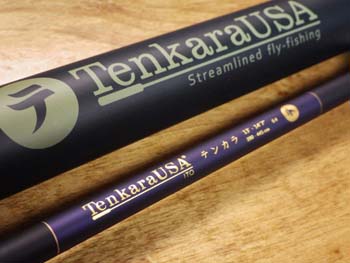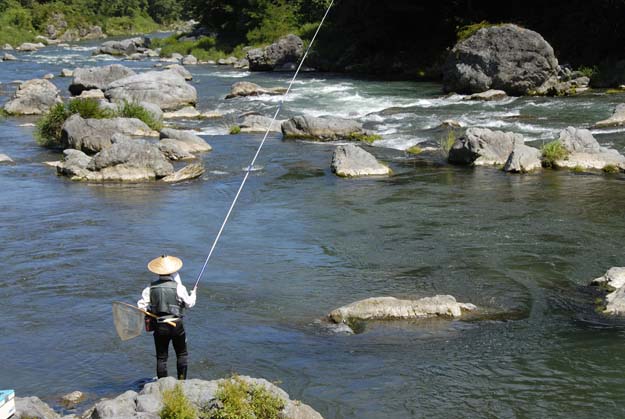I bought a TenkaraUSA Ito. A fixed length line cast has its enemies…
Daniel Galhardo, the charismatic Father of Tenkara in the western hemisphere, sold me on giving the ‘way’ a try. My baptism was at the Tenkara Jam this fall in Cherokee, North Carolina. An event successfully orchestrated by the inimitable Jason Sparks, his enthusiastic wife, and helpful children.
While the event had little to do with any hands-on casting – a restriction of natural cause because there was no place possible to have a demonstration or “casting pool.”
The JAM was an inside job

My tenkara, an Ito.
The enthusiastic and well-schooled presenters used screen presentations to show ‘how to’ on some things that would have better been in an outdoor demonstration. The building lighting did not help the screen visuals. Due to day light intrusion through unshaded windows, off center seating angles made screen viewing a strain, at least it did for this old timer.
All that said did not deter the happy tenkara campers. A conversation came easily for everyone and I learned a lot. My dilemma would come when the Ito and its accouterments arrived. The consternation would be casting. Yes, you need to do that.
YouTube would help, but doing is how one actually learns
I found out that the tailing loop, an infestation of flawed casting common to all who have fly fished conventionally, is a possible intruder in a tenkara cast as well. The tailing loop infection arrives in a tenkara cast the same way that it would make its way into a conventional cast; trying to cast further.
What happens when we make wind knots (tailing loops)
Simply, the forward cast is too soon and an uncontrolled muscle cast can send the line off course on the back cast; making a “U” shape caused by dipping the rod tip via the top section of the line ending up below the bottom section.
Although this is less likely a hazard in tenkara due simply to a shorter, fixed length line, it can happen and be disruptive along with occasionally losing a fish
A clue to look for on a tailing loop error is, of course, a bad cast, but it is usually a snaked pile up of line in front of you well short of your goal.
Here’s how to avoid making wind knots in a tenkara cast

The best grip position for tenkara at any skill level, and a real easy way to improve as a conventional caster.
Tailing loops are not the by-product of speed, but the path of the tip as it unloads.
The best casting technique, used by the inventors of tenkara (Japanese mountain peasants), is a short compact stroke that delivers the line and fly in a straight path to the target.
With conventional fly fishing and tenkara fly fishing you can completely eliminate “hinging” (wristy causing a collapsed line), by placing your index finger on top of the handle with the palm at the rear of the handle for added leverage. Then, you can only comfortably bring the rod to about 12:00 o’clock and stop before the anatomy of your hand restricts further wrist bending.
Then, after the line loads (almost immediately in tenkara) follow with a short stroke to about 10:00 o’clock and keep your wrist in an uncollapsed position as you snap the line and fly to the target. The error statistics are highly predjudicial towards NOT letting the line load the rod completely, or forward casting too soon.
For penetration under limbs and brush, simply adjust the angle of line and fly attack – the same as in a conventional cast.
[information]
[/information]






